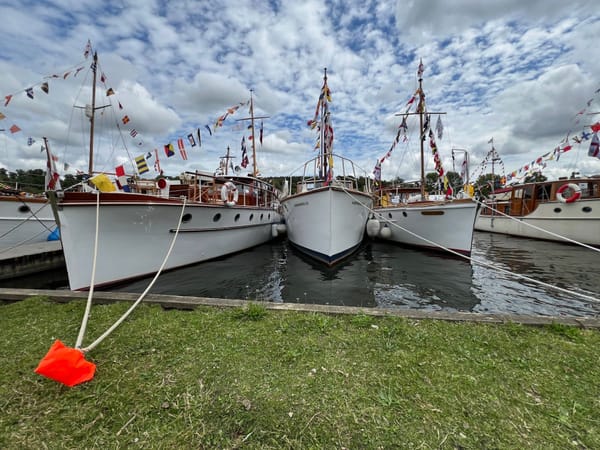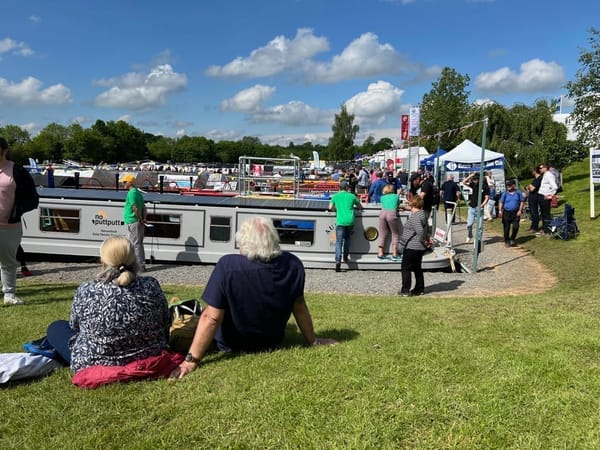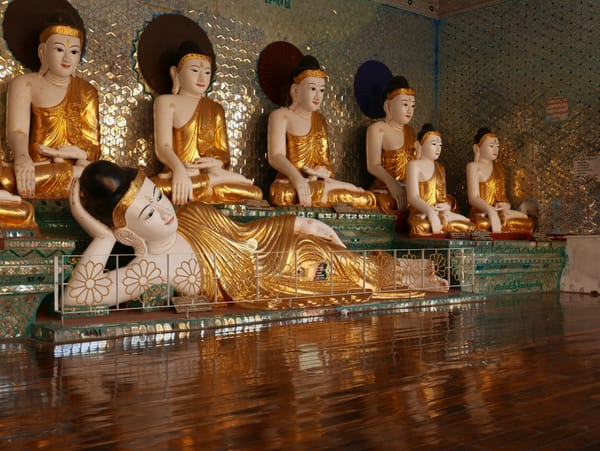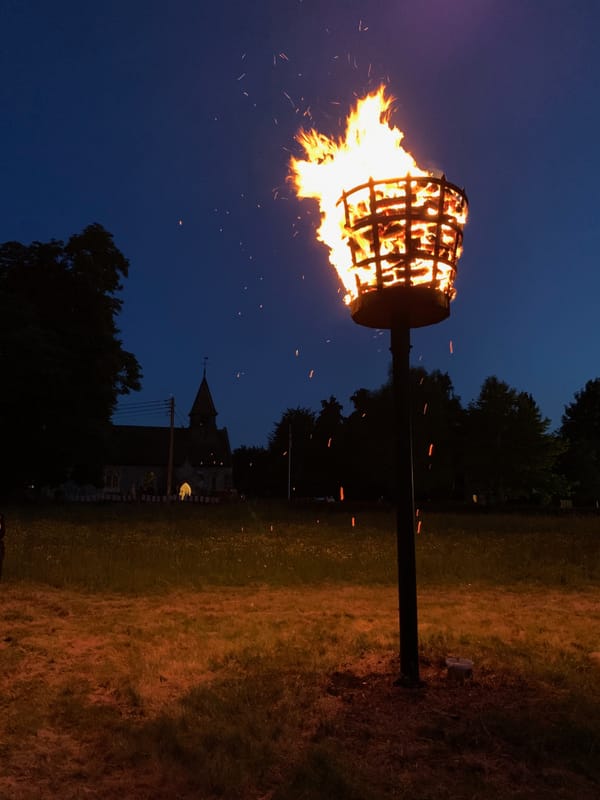Myanmar (Burma) — Yangon (Rangoon) War Cemetery, Myanmar (Burma)
A tranquil place in the hustle and bustle of Yangon
March 2015
I saw the Yangon (Rangoon) War Cemetery — maintained by the Commonwealth War Graves Commission (CWGC) — mentioned on a couple of travel websites, so I thought I would have a look, and I was glad I did.
On the Circular Train, I got off at Hanthawaddy Station and walked to the cemetery, which took about 20 minutes. The route was down main roads (with no pavements) and was very hot.
The cemetery was down a little backstreet and was quite hard to find — it took a bit of searching, even with Google Maps. No signs indicated the cemetery’s location.
When I visited Yangon, there was some confusion over war cemeteries in the area. There was the Yangon (Rangoon) (map) cemetery and also the Taukkyan War (also called Htauk Kyant) Cemetery (map). The two seemed to get confused online, with TripAdvisor having Taukkyan at the wrong location.
Anyway, I went to the Yangon (Rangoon) Cemetery. And I later visited the Taukkyan War (also called Htauk Kyant) Cemetery which I can confirm is some distance from Yangon.
The inscription in the information book at the Yangon (Rangoon) Cemetery stated:
"Rangoon War Cemetery was first used as a burial ground immediately following the recapture of Rangoon in May 1945. Later, the Army Graves Service moved in graves from several burial sites in and around Rangoon, including those of the men who died in Rangoon Jail as prisoners of war.
There are now 1,381 Commonwealth servicemen of the Second World War buried or commemorated in this cemetery. 86 of the burials are unidentified and there are special memorials to more than 60 casualties whose graves could not be precisely located.
In 1948, the graves of 36 Commonwealth servicemen who died in Rangoon during the First World War were moved into this cemetery, 35 of them from Rangoon Cantonment Cemetery and one from Rangoon (Pazundaung) Town Cemetery.”
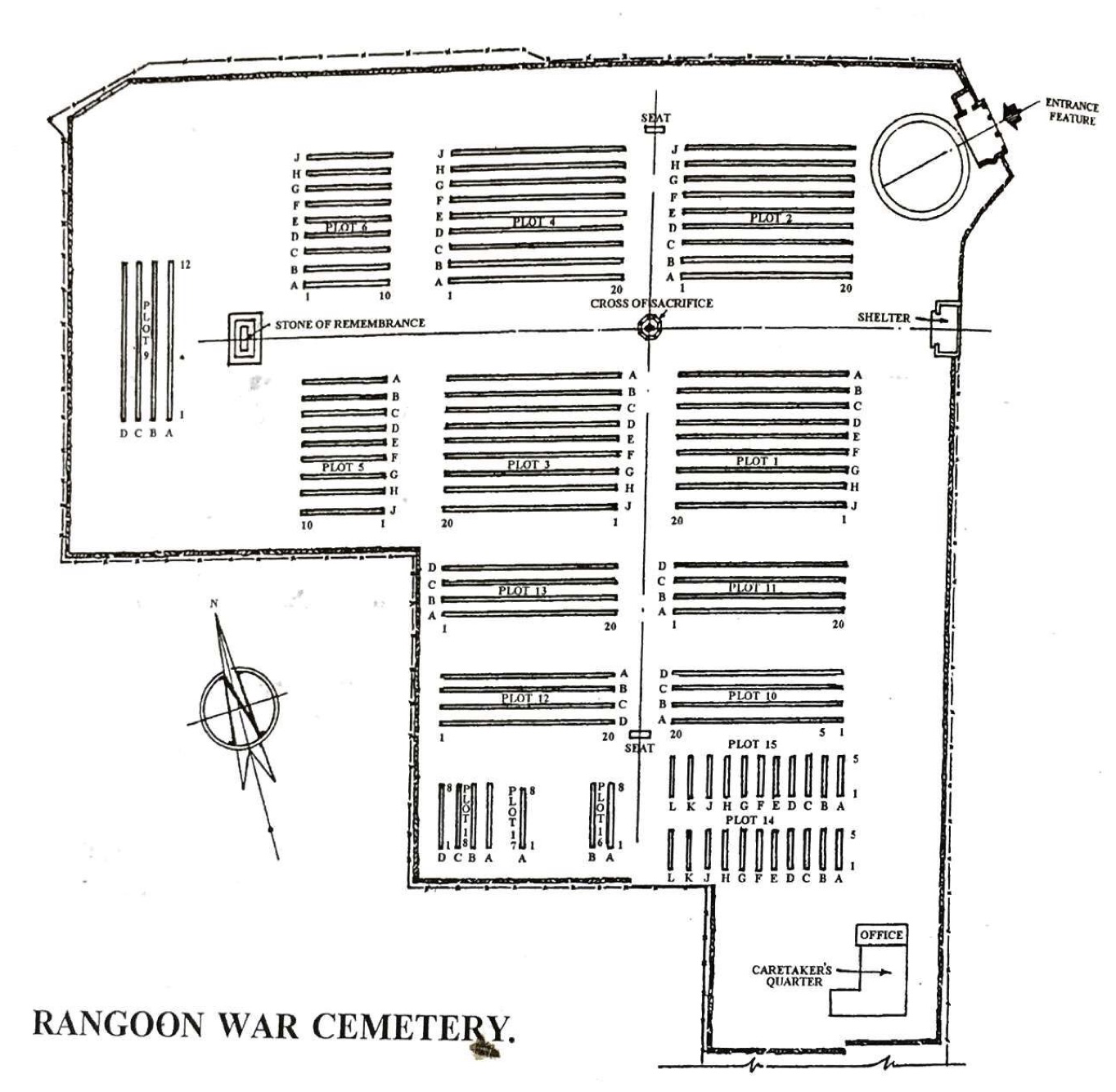
The photo below shows the Yangon (Rangoon) War Cemetery entrance. It is tucked away down a side street, and you would have to be looking for it to find it.
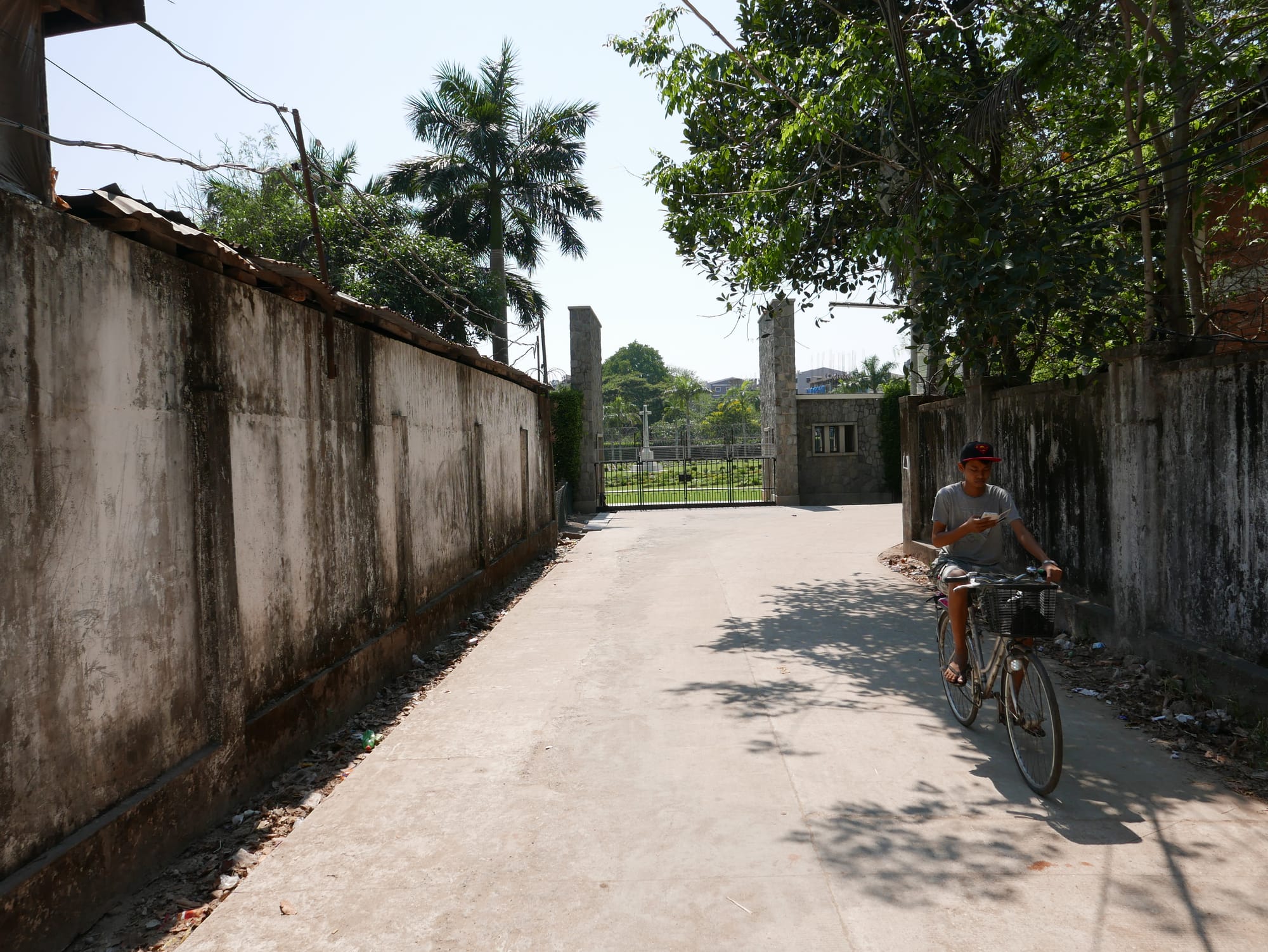
The main entrance to Rangoon War Cemetery — it doesn’t look like much.
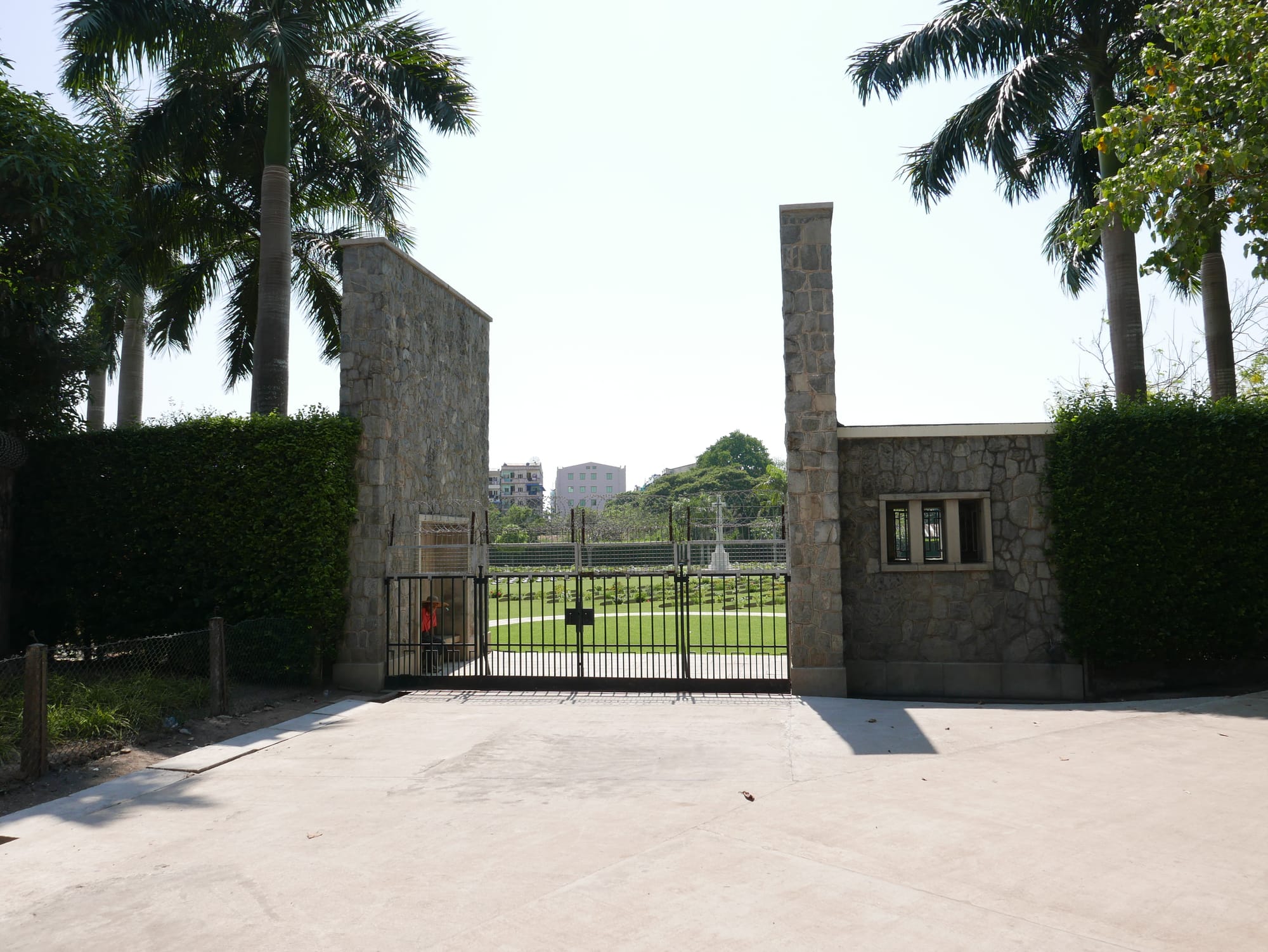
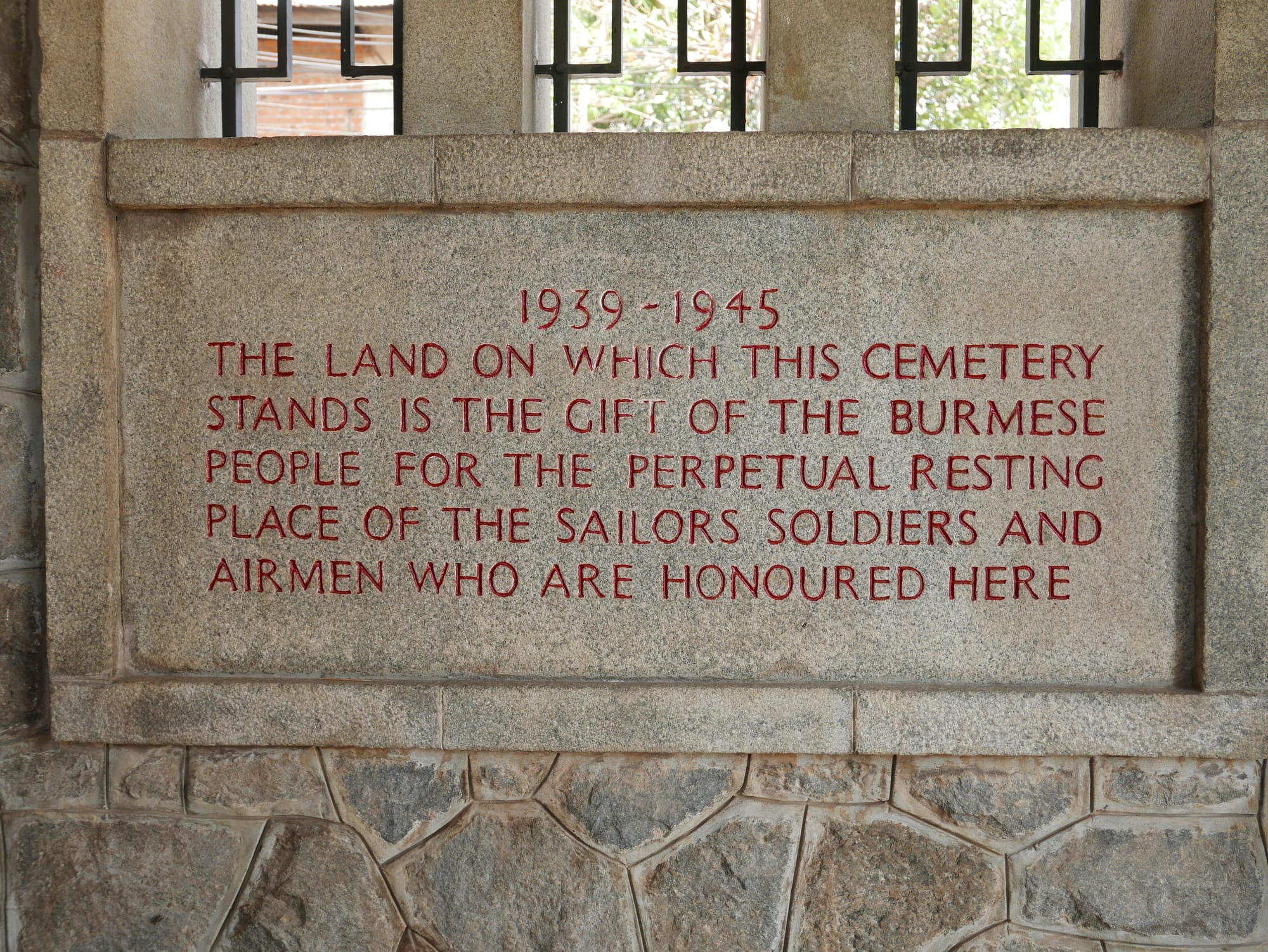
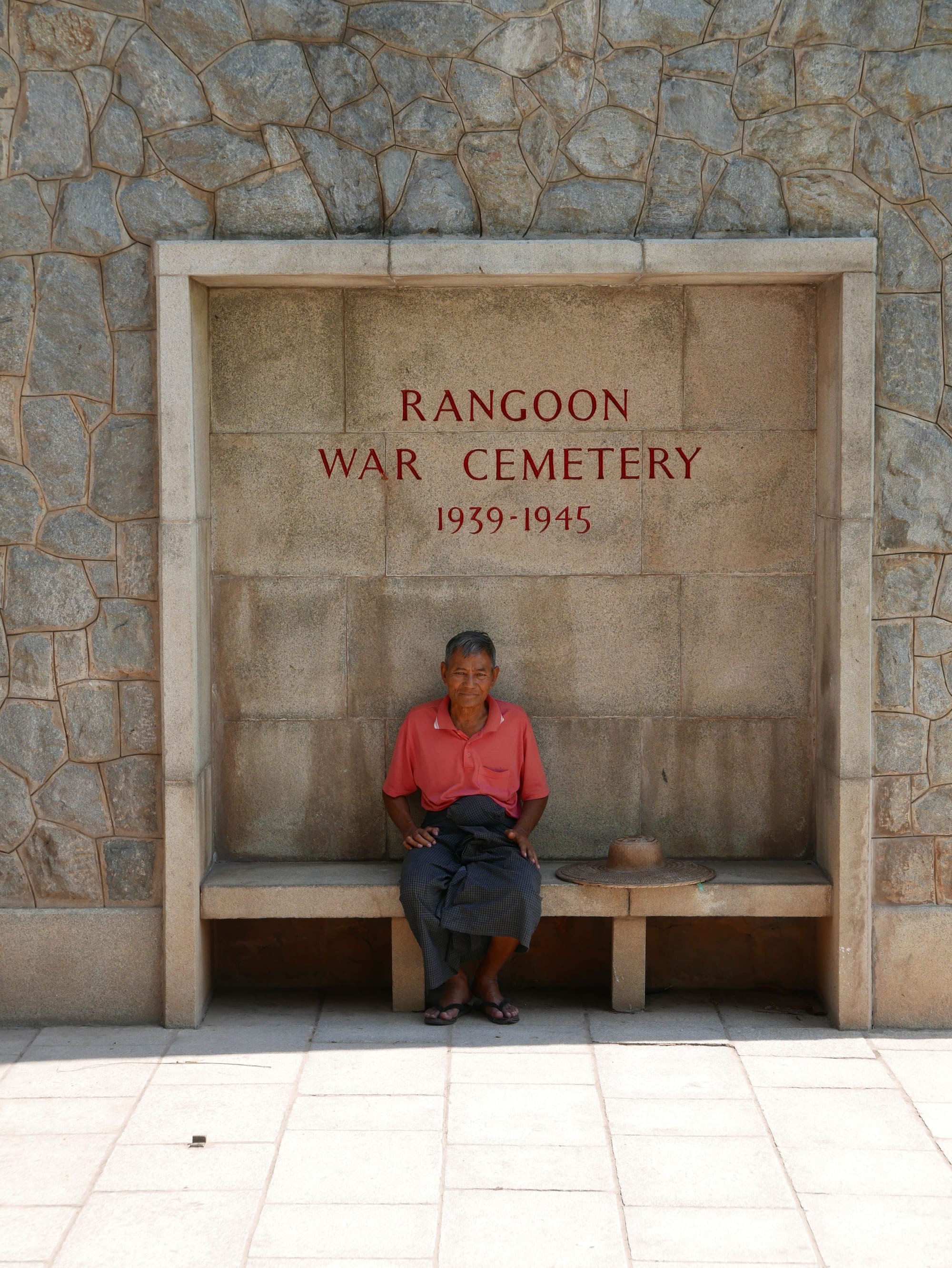
The Yangon War Cemetery was very well-kept. Exceptionally neat and tidy.
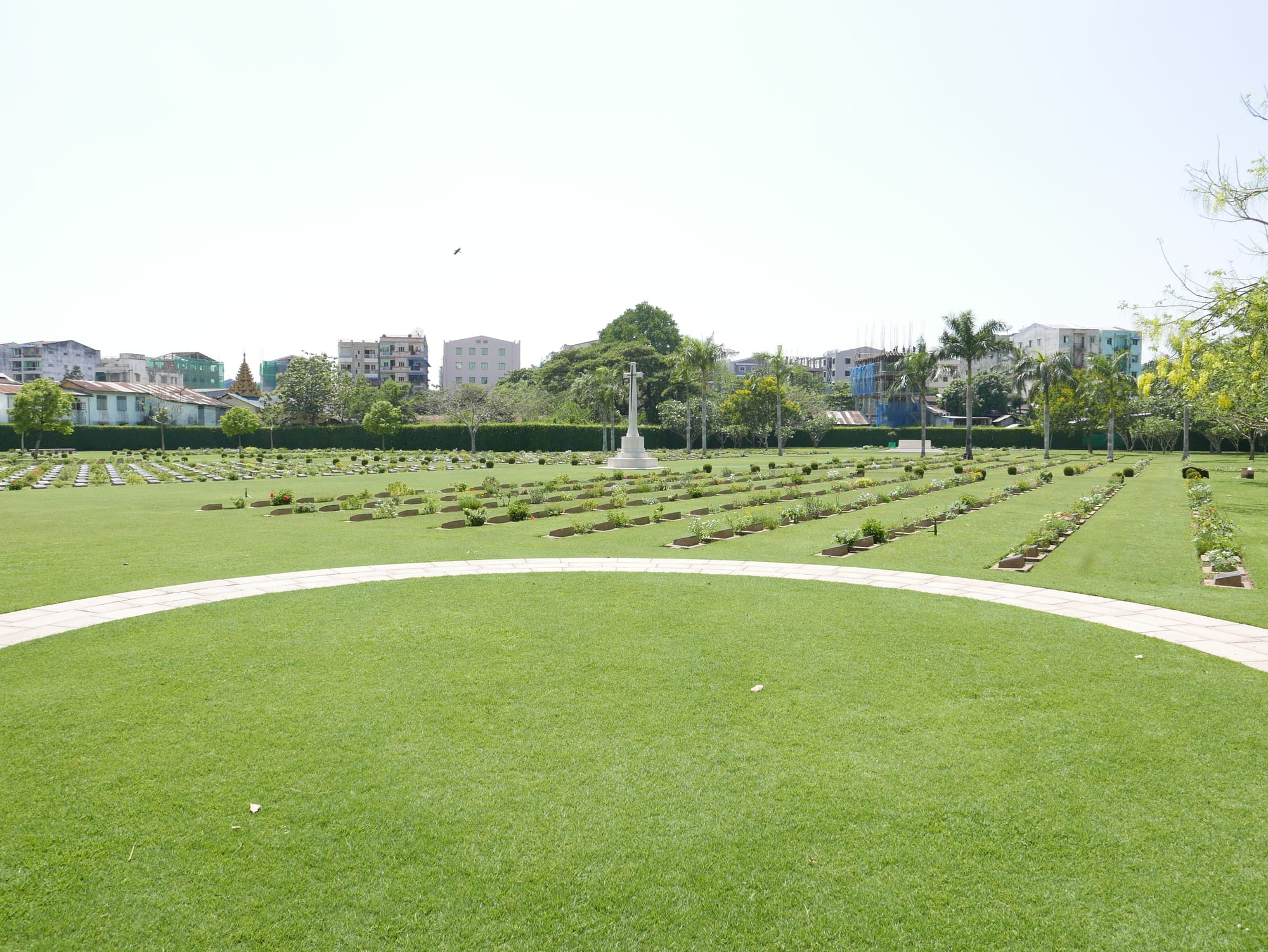
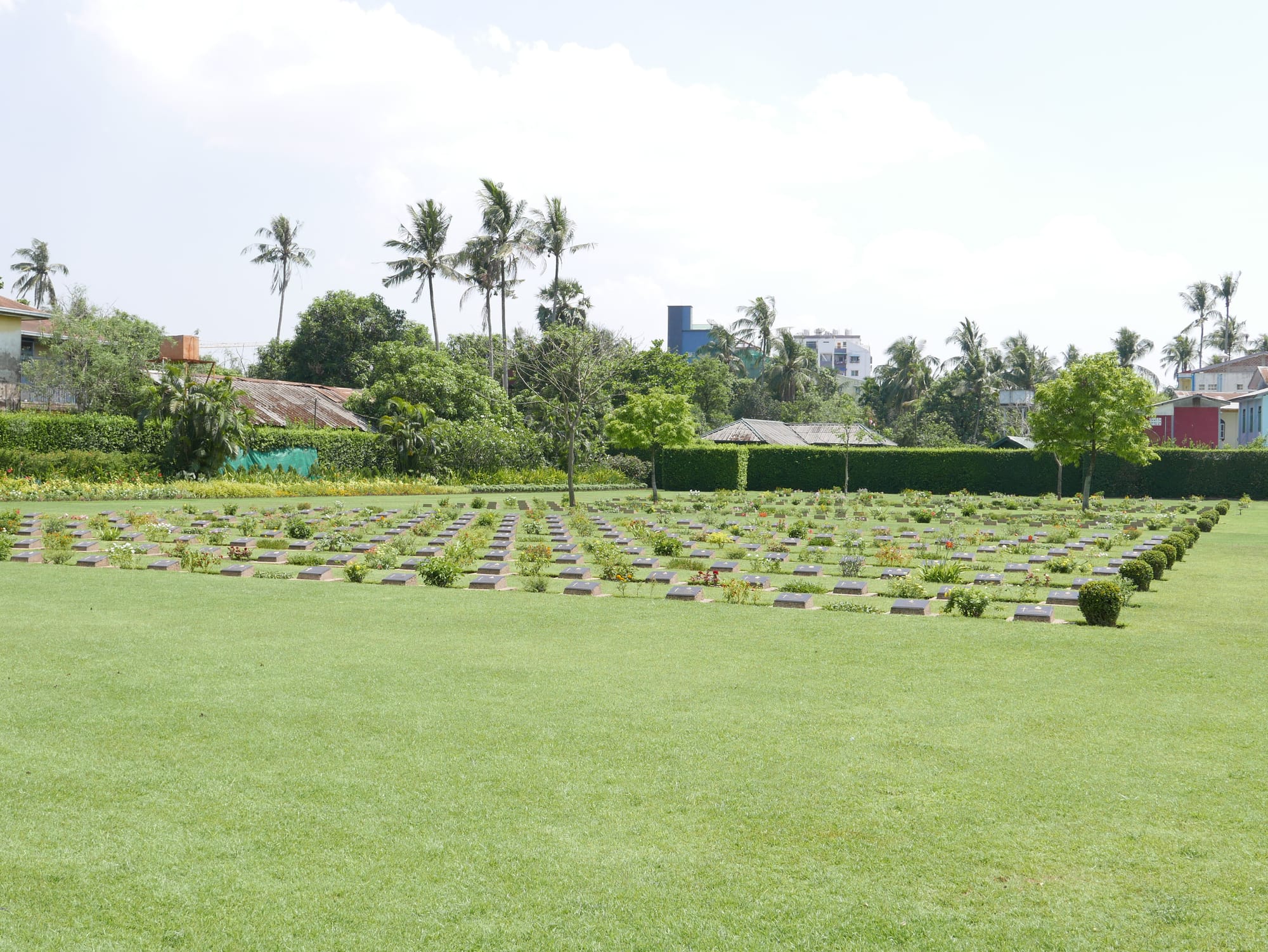
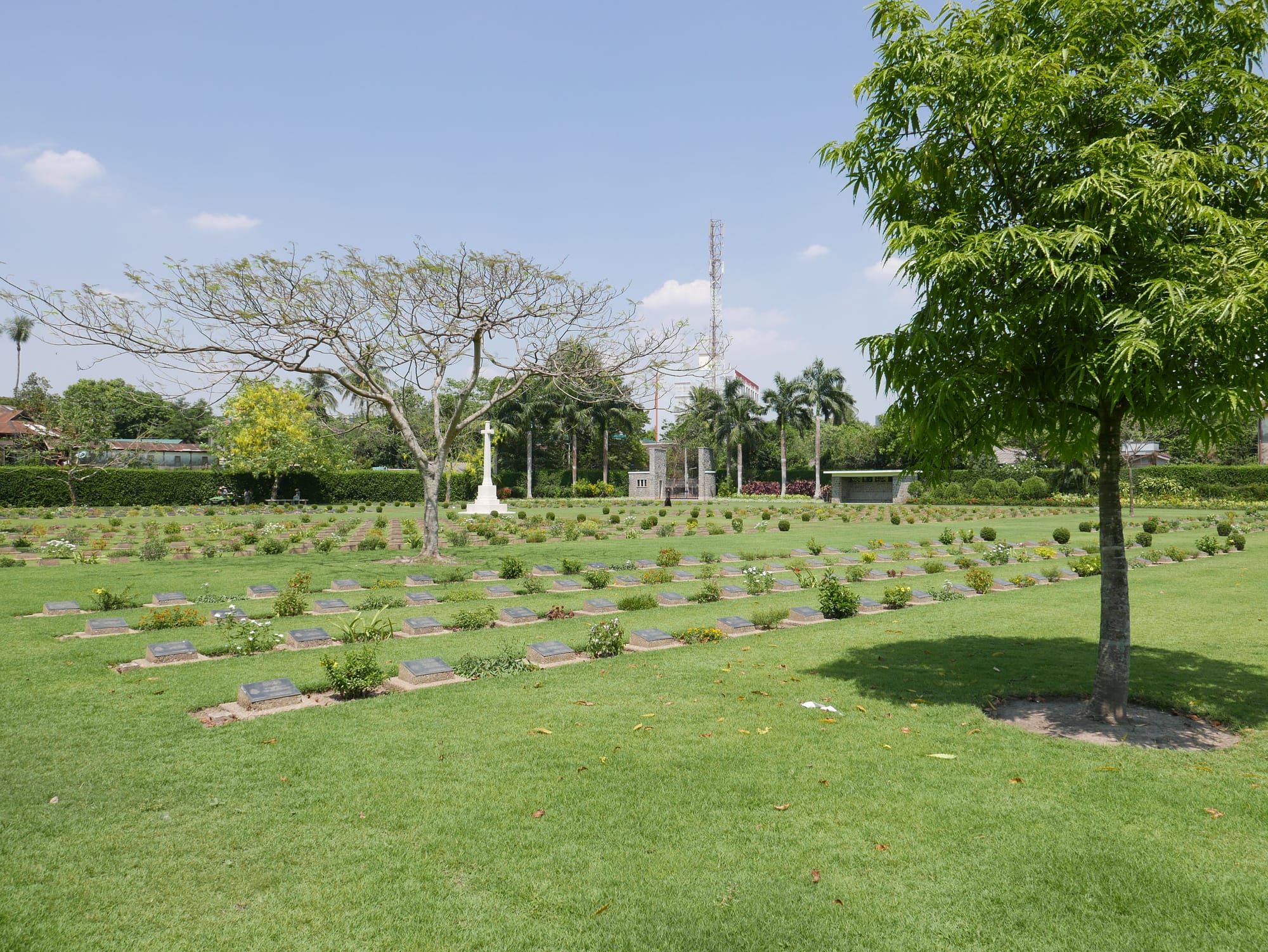
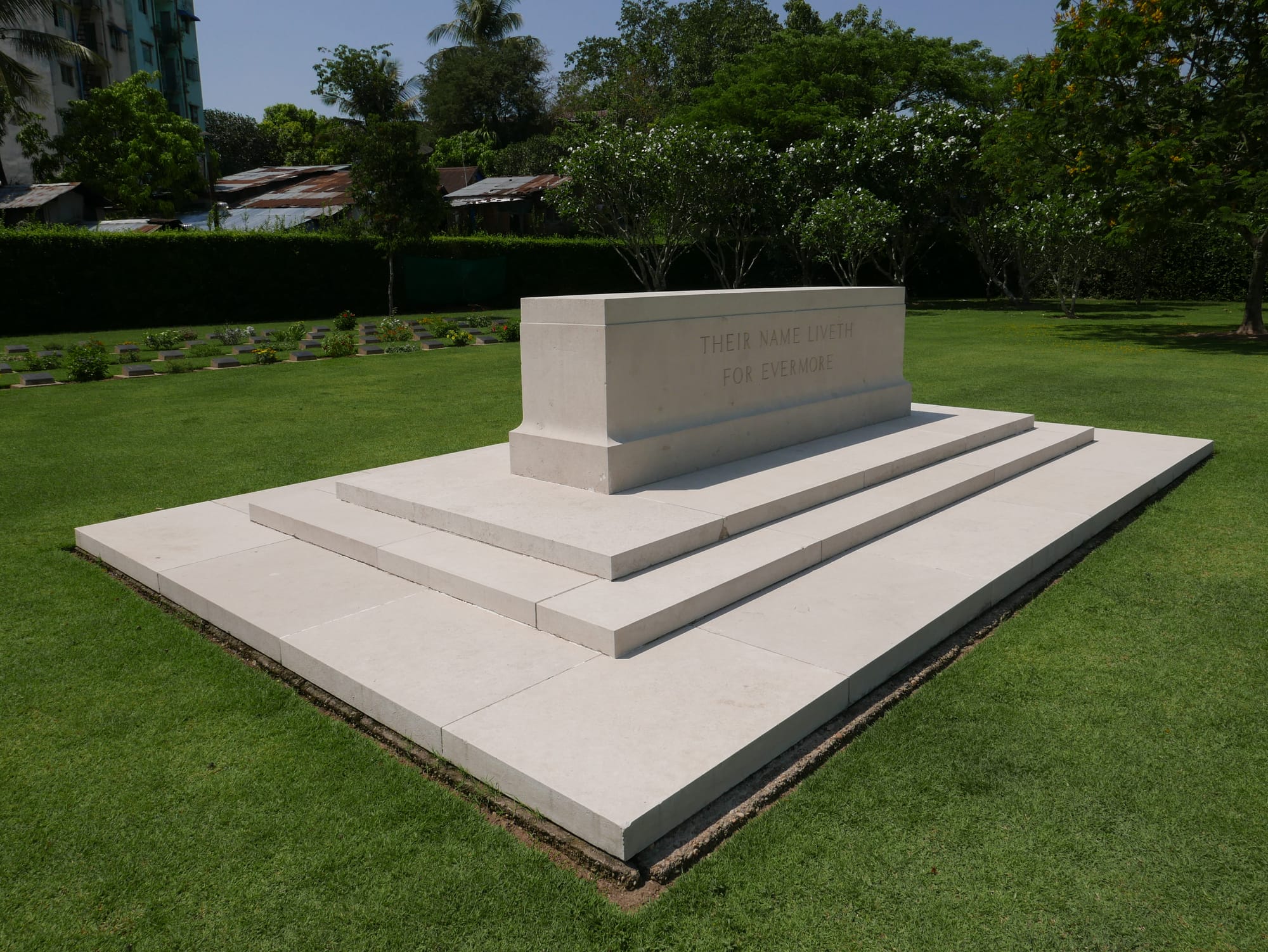
The Yangon War Cemetery was an astonishing place. It was very well-kept, and despite Yangon’s mad hustle and bustle just outside the main gate, it was surprisingly quiet.
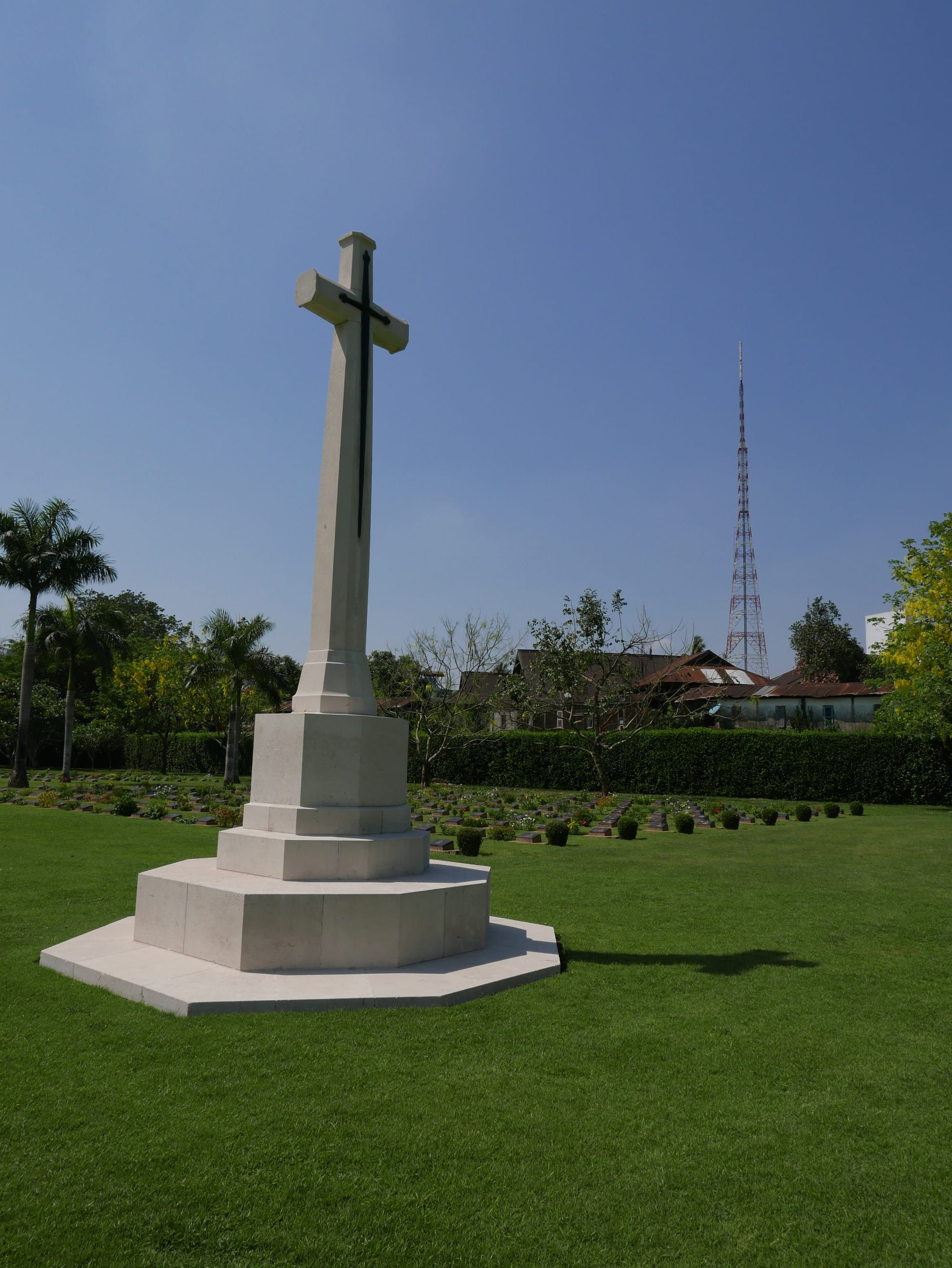
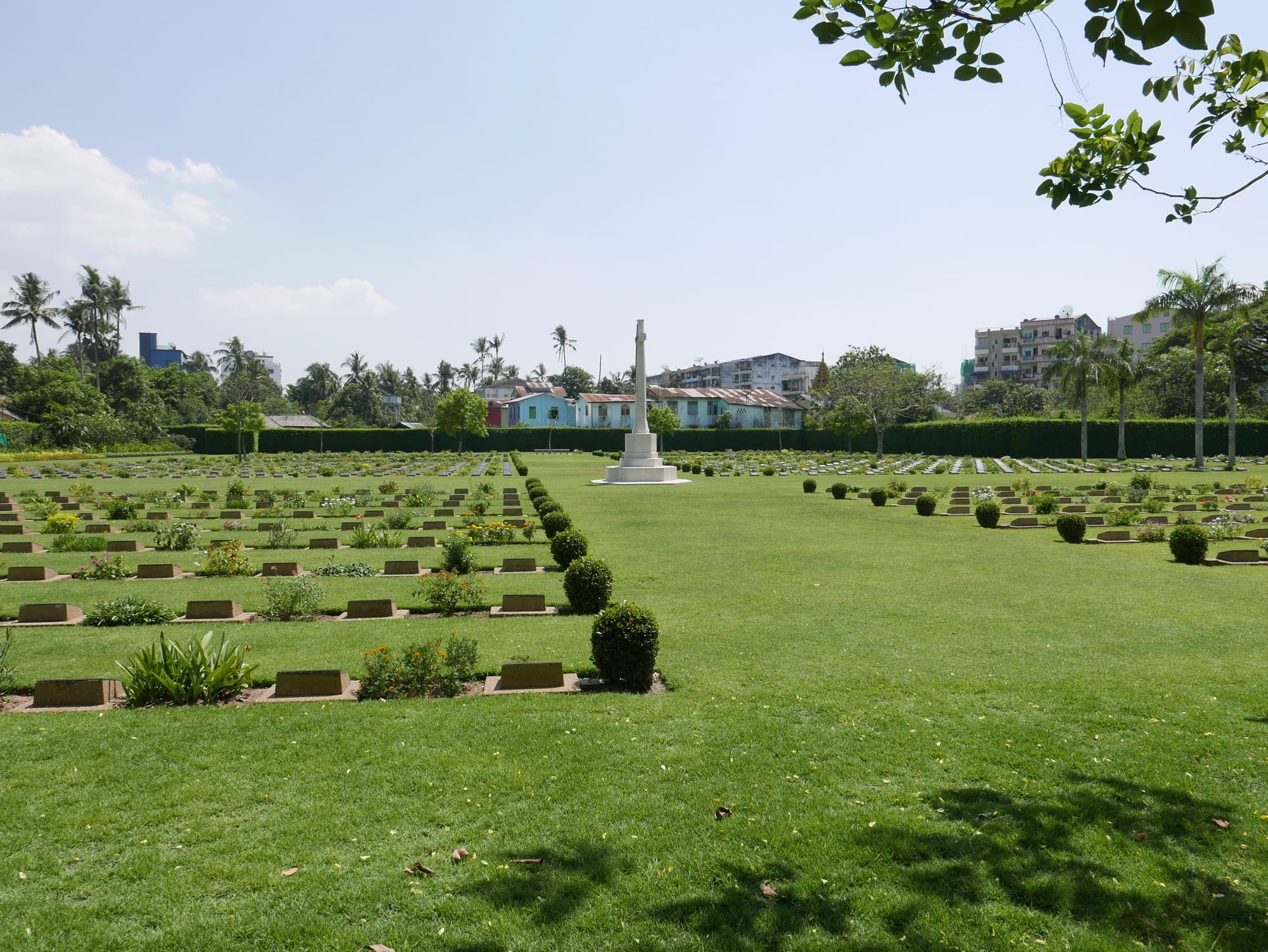
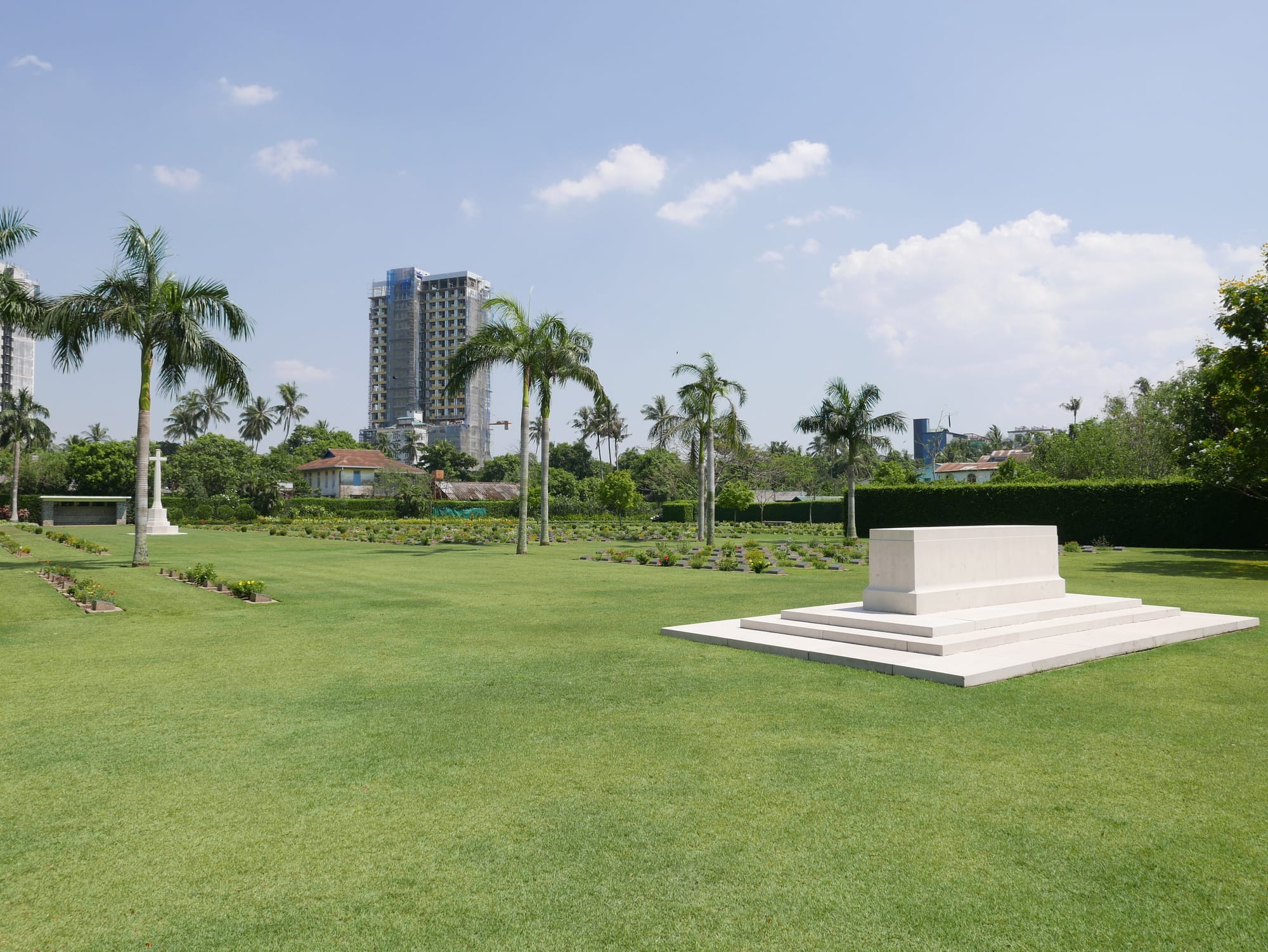

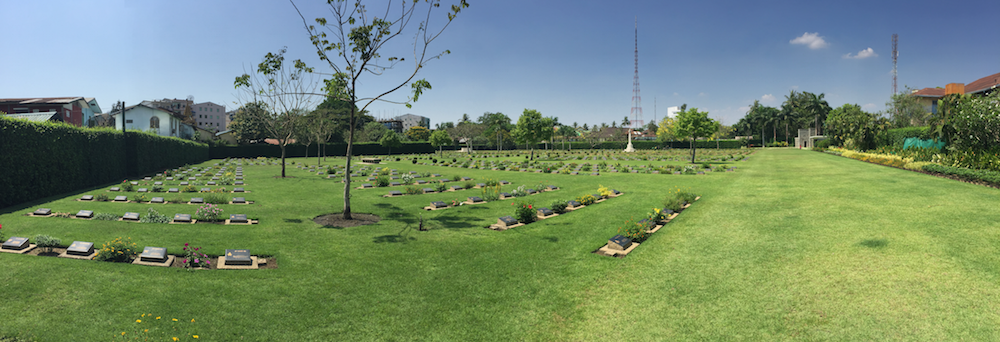
One particularly striking entry in the information book was for Flt. Sgt. Woodbridge:
"WOODBRIDGE, Flight Sergeant, (Wireless Operator), STANLEY JAMES, 1393806. G C. 159 Sqdn., Royal Air Force Volunteer Reserve. 7 February 1945. Age 23. Son of James Henry and Mary Ashman Woodbridge; husband of Florence Edith Woodbridge, of Chingford. Essex. The following details are given in the London Gazette of 24th September, 1948, in which the award of the George Cross was announced:
Flt. Sgt. Woodbridge was the wireless operator in a Liberator aircraft which crashed in Burma on 31st January 1945, and was taken prisoner by the Japanese together with 5 other members of the crew. All six were subjected to torture, and eventually the four N.C.O.'s were separated from the others, taken to a forest and there put to death by beheading. During the subsequent trial of three officers and three N.C.O.'s of the Japanese Army at which they were found guilty of the torture and murder of these four airmen, it was revealed that they had concentrated their efforts on Flt. Sgt. Woodbridge, in an endeavour to obtain technical information which would have been useful to the Japanese Intelligence service. Despite repeated and prolonged torture this gallant airman steadfastly refused to speak, and was beheaded on February 7th, 1945. Flt. Sgt. Woodbridge behaved throughout with supreme courage. His fortitude, loyalty to this country and complete disregard for his own safety constitute one of the highest examples of valour in the annals of the Royal Air Force. Grave Reference: Col. grave 3. F. 6-9.”
His grave marker is shown below.
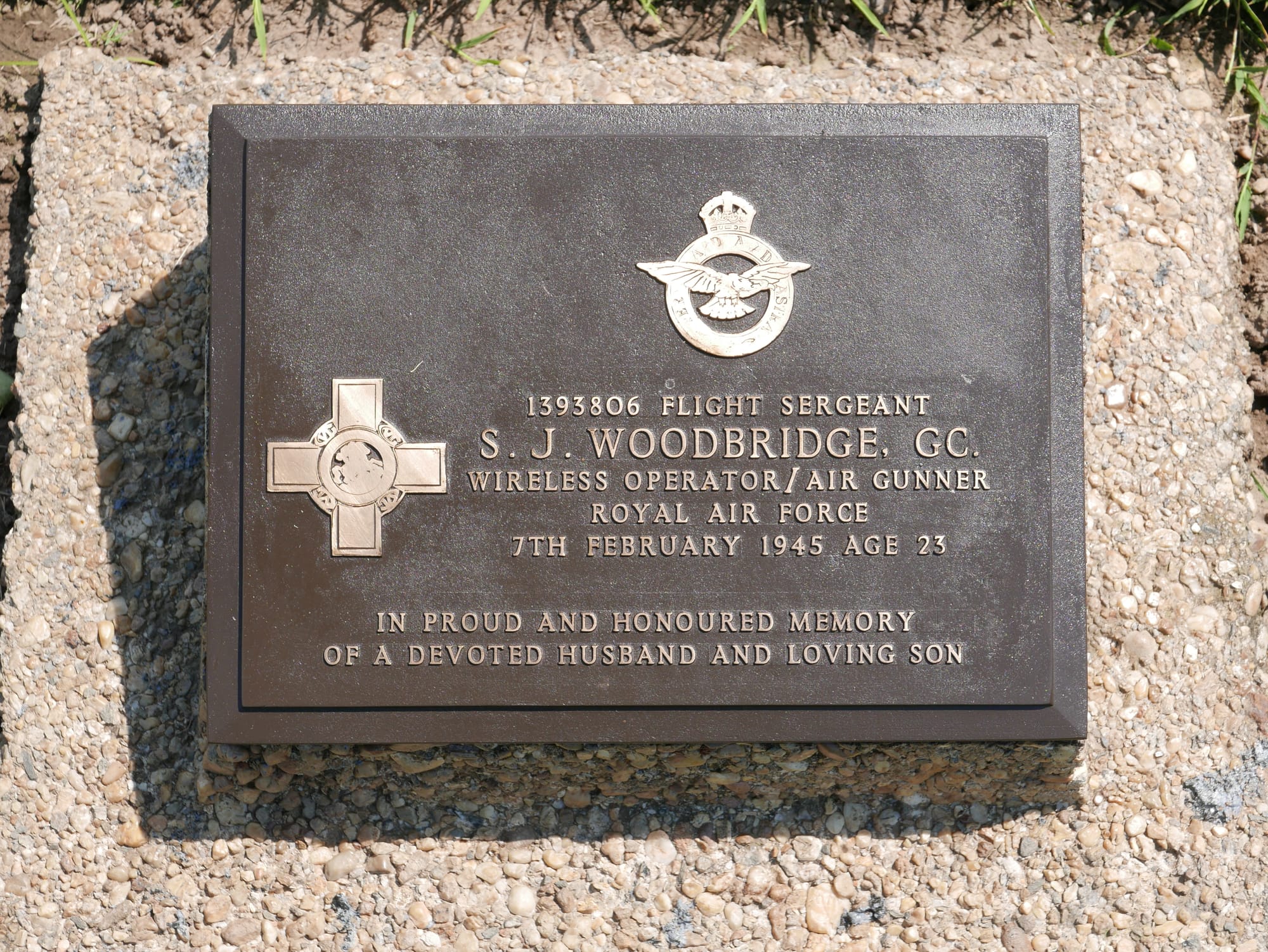
The Rangoon War Cemetery was a remarkable place. Beautifully kept and maintained. Long may it remain so.
